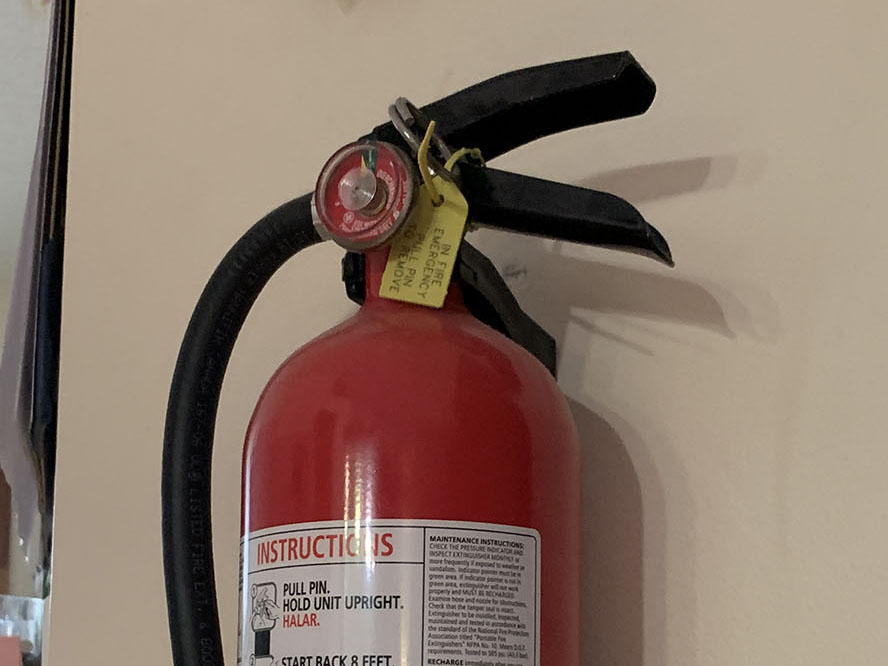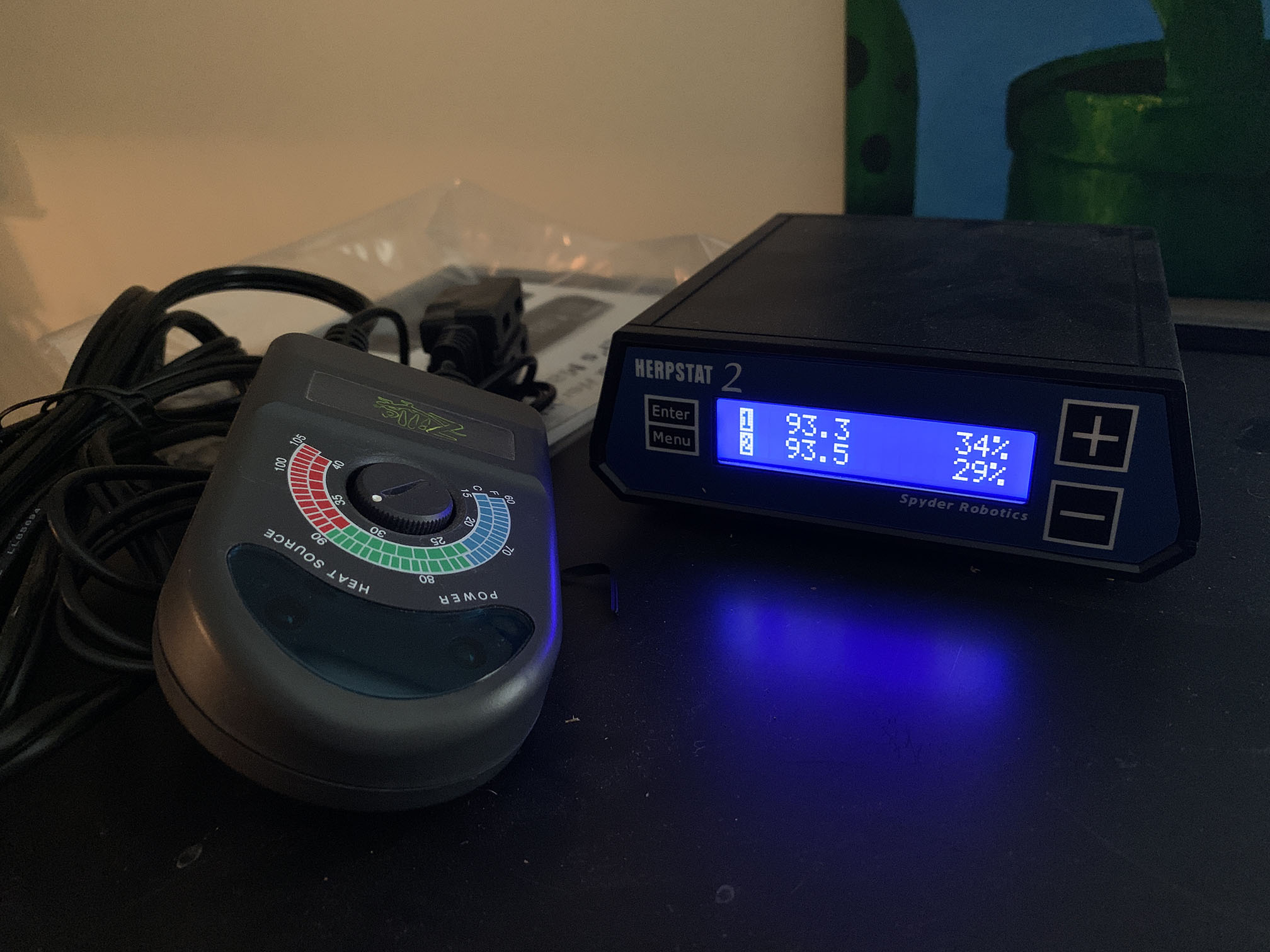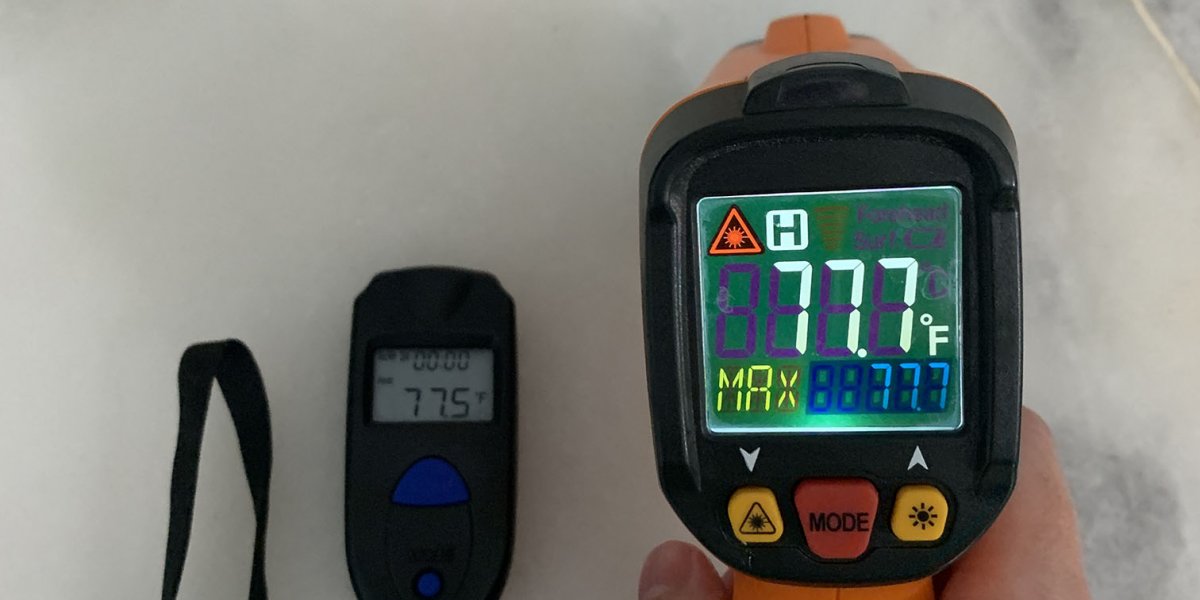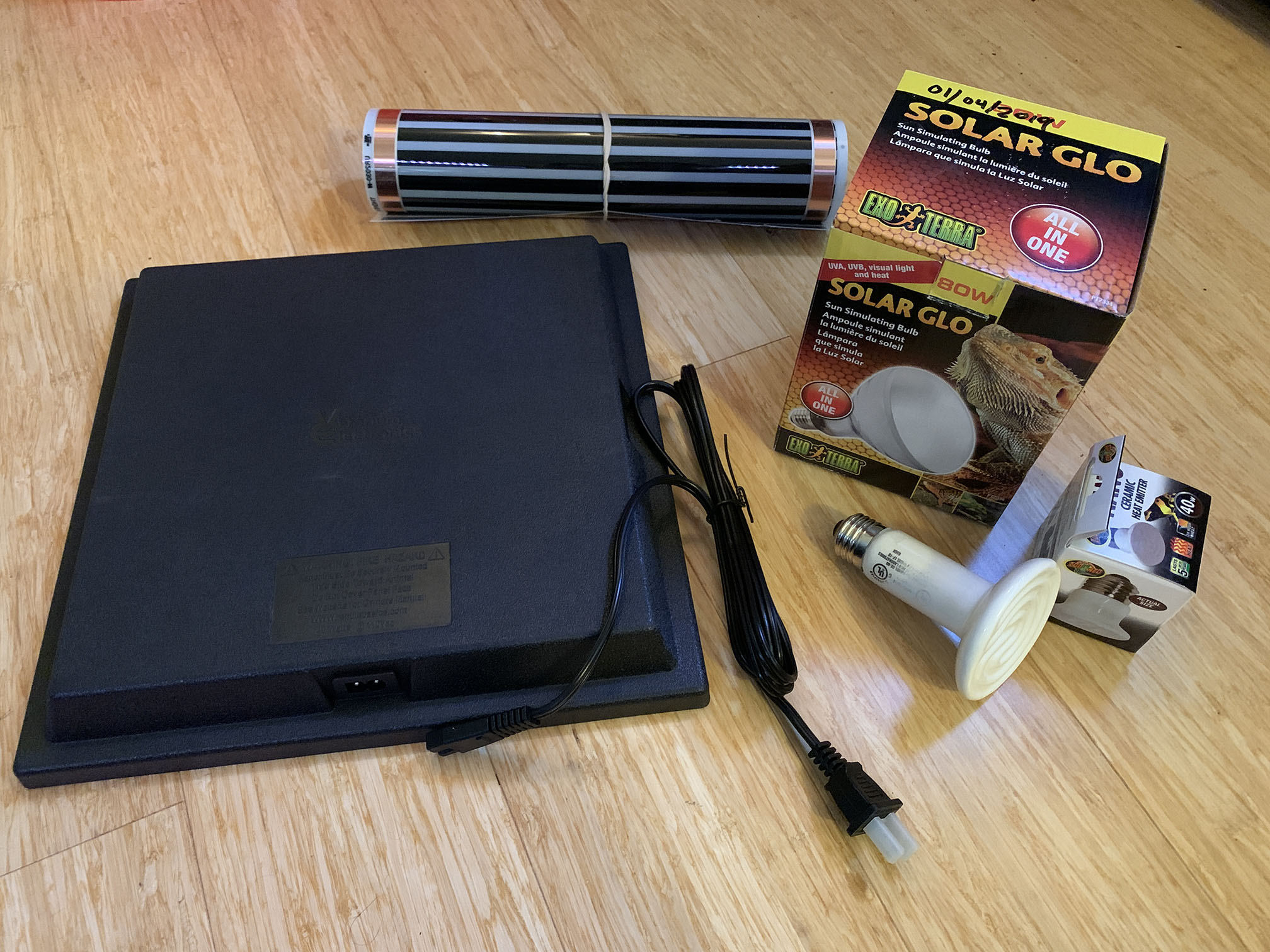Heating an enclosure is one of the most important things you will do. Ideally, once is set up, you shouldn’t have to worry about it too often. However, establishing that proper temperature gradient (and throwing in different kinds of enclosure types into the mix) can make the “set-up” part pretty frustrating.
It takes time and experience with equipment to become comfortable with it, and the environment your enclosure is in (most likely a room of your house) will be unique to the individual. Our heating and lighting techniques have changed and evolved over the years since we started. The “best” choice is not necessarily the one I would recommend first. Therefore, your technique may evolve as well (and that is OK!)
Safety
I cannot stress this enough. This should be your #1 priority for your animal, yourself, and your family.
The first thing you should do is go out and buy yourself a Class III surge protector for any and all heat/light devices you plan on plugging in. Why a surge protector? The obvious answer is, it can protect your expensive equipment from power surges during a storm (this is a good thing!) However, a good surge protector can also shut off the device if it starts to short.
Some heaters may be more insulated than others, but I would advise a healthy mistrust of all of them. In the past we’ve only found out how insulated they are after they have shorted and we’ve taken them apart to examine them. Ground Fault Circuit Interrupters (GFIs or GFCIs) are also great if you are able to use one.
Next is equipment to keep your animal safe. All heat mats, heat tape or heat panels should be plugged into a thermostat. Also, get yourself a nice temperature gun. You can generally find these at the hardware store. The temp guns I like best have a digital reading and an option to turn on/off the target laser, so you can see what you’re pointing at (and not blind your animal).
Temperature gauges can be great for checking ambient temperature (and please use them too!), but a temp gun will tell you about the surface your animal is actually sitting on, the temperature of your animal, and can target multiple areas of the enclosure in a short amount of time. This can be particularly significant in the case of some heat sources, like the heat mat, which can get very hot to the touch but only mildly affect the ambient temperature (more on that below).
Finally, check your equipment regularly. Heat mats get covered by substrate, so you can’t easily see them. This is a problem if it decides to detach itself from the bottom of your enclosure. Ceramic heaters don’t give off any light at all, so it’s important to check and make sure it is working (or that you didn’t turn it off by accident).
TYPES OF HEATERS
The heater you choose should be tailored to the species of animal you have, and done with consideration for the temperatures in your house. In some cases, it may be best to use a combination of heater types to get the temperatures you want.
Ceramic Heat Emitter (CHE)
These are bulbs that you affix to a dome and place on top of (or hang above) a screen top enclosure. They put out heat, but no light. This makes them very efficient heaters—they aren’t wasting any wattage on light. Therefore, a CHE will most likely reach higher temperatures than a lamp of the same wattage.
Because CHEs get so hot, it is important to make sure the dome you choose is rated for a heat emitter. I would probably recommend you not use a CHE in a double dome heater. Use two domes instead.
CHEs are great for heating the area below, and a sizeable cone of warmth around it. In some cases, one CHE might be suitable for the whole enclosure.
It is important to consider that, because of the amount of heat CHEs give off, they will dry out your enclosure quickly. This will be fine (and maybe helpful) for lower-humidity species. For higher-humidity species, you may need to spray the enclosure more frequently to counteract this drop in humidity.
For a CHE, be sure to check the temperatures where your animal will be sitting. For a basking snake, for example, it may be the rock sitting directly under the heater. For an arboreal snake, this might be a perch significantly closer to the heater. Make sure the temperature at this distance is still safe for the animal.
CHEs come in different wattages, and you can get a higher or lower wattage bulb depending on how much heat you need. This will vary depending on your ambient temperatures in your room and the size of your enclosure.
Radiant Heat Panel
These panels heat from above, and they work by emitting infrared radiation (thermal radiation), much in the same way a Ceramic Heat Emitter (CHE) does. However, these are designed to be very efficient, so that the heat panel itself does not need to get as hot to attain the same temperatures on the surface it hits. These are also made to mount onto a solid surface (such as the ceiling of a PVC enclosure), so less heat is lost.
I do not recommend mounting a radiant heat panel to the inside of a screen top. Your animal will find a way to wedge himself between the panel and the screen (trust me). Because radiant heat panels are so efficient, they can be effectively used in high and low humidity enclosures. You will still need to monitor your humidity and airflow to ensure proper animal husbandry.
For a radiant heat panel, be sure to check the temperatures where your animal will be sitting. For a basking snake, for example, it may be the rock sitting directly under the heater. For an arboreal snake, this might be a perch significantly closer to the heater. Make sure the temperature at this distance is still safe for the animal. Many manufacturers will specify a minimum safe distance from all objects and animals, as the surface will heat much faster than the air.
Be sure to check your manufacturer’s specifications for enclosure size and height when choosing a heat panel size. When in doubt, choose a more powerful heat panel. Make sure your heat panel is connected to a thermostat, both for the safety of the animal and the lifespan of the panel. Heat panels kept at max power for prolonged periods can warp and will have a much shorter lifespan.
Heat pads and heat tape
These are grouped together because they function in the same way. The tape or pad is placed on the outside of the enclosure and the surface heats, creating a warm area for the animal. These warm the immediate area, but have little impact on the ambient temperature of the enclosure.
Always use a heat mat/heat tape with a thermostat. Your temperature probe can be affixed to the heat tape itself (on the outside), placed in the inside of the enclosure on the glass, or placed in the inside of the enclosure on top of the substrate, over the tape/pad area. In any case, make sure you keep in mind the inside surface of the enclosure. If the animal moves the probe, it will change the temperature. If the animal digs down through the substrate, it will be in contact with that surface. Therefore, the surface must be a temperature that is still safe for animal contact.
Keep in mind that the adhesive binding heat tape or a heat mat to the enclosure surface is not perfect. The heat mat/tape will not always be in view; you should check it regularly to make sure that the mat/tape is still adhering. I have particularly found this to be an issue with heat mats. At higher temperatures, the heat will eventually cause the heat mat to peel away from a surface. You can reinforce heat mat adhesion by adding foil tape (often used in HVAC applications) to the top edges of the mat. If the mat is warped, throw it out.
In the case of heat tape, make sure it is installed correctly. Installation of heat tape involves live wires and must be done correctly to avoid shorts (however, you should still be using a surge protector).
Because heat mats/tape only warm the immediate area, you may need to use a secondary heat source for the ambient temperature of your enclosure. In general, the ambient temperature of your enclosure is going to be the temperature of the room the enclosure sits in, unless another heat source is added.
Heat lamps/bulbs
Heat lamps are bulbs that you affix to a dome and place on top of (or hang above) a screen top enclosure. This includes spot lamps and mercury-vapor bulbs. These put out heat and light. Light can be beneficial, adding to your reptile’s routine and day/night cycle. Some bulbs also have UVB light, which is required for some reptiles (see the “UV lights” section below). Check your bulbs carefully. If they don’t say UVB, they aren’t.
Heat lamps are great for heating the area below, and a sizeable cone of warmth around it. In some cases, one lamp might be suitable for the whole enclosure. It is important to consider that, because of the amount of heat that heat lamps give off, they will dry out your enclosure quickly. This will be fine (and maybe helpful) for lower-humidity species. For higher-humidity species, you may need to spray the enclosure more frequently to counteract this drop in humidity.
For a heat lamp, be sure to check the temperatures where your animal will be sitting. For a basking snake, for example, it may be the rock sitting directly under the heater. For an arboreal snake, this might be a perch significantly closer to the heater. Make sure the temperature at this distance is still safe for the animal.
Heat lamps come in different wattages, and you can get a higher or lower wattage bulb depending on how much heat you need. This will vary depending on your ambient temperatures in your room and the size of your enclosure. Be sure that any dome you get is rated to handle a heat bulb, which will produce more heat than a regular lightbulb.
UV lights
UV bulbs are bulbs that you affix to a dome or other fixture and place on top of (or hang above) a screen top enclosure. UV bulbs do not produce a significant amount of heat. However, UV light—specifically UVB light—is required for herbivorous, insectivorous and omnivorous reptiles (this includes many lizards, like bearded dragons and chameleons, and tortoises). UV light helps these groups of reptiles to process Vitamin D3 into useable Vitamin D—they need it to properly process vitamins.
Carnivorous basking lizards, like monitor lizards, also require UVB. These animals gain their Vitamin D from their whole-food prey, but they bask naturally in the wild and gain other benefits from UV light. UVB, a component of natural sunlight, has been attributed to production of endorphins, boosted production of healthy skin pigmentation, and stimulation of the immune system (Baines, 2017). It also may help kill external fungi and viruses (Baines, 2017). Therefore, it may even be beneficial to consider UV light for other reptiles like snakes that may not be out in the sunlight basking as often.
UVB bulbs can be combined with other basking bulbs that may not provide UVB to meet your reptile’s heating requirements. Some bulbs (see “heat lamps” above) may also provide UVB. It is important to check the packaging and identify what the bulb does. In any case, if your reptile requires UVB, make sure that it is in an area that your reptile has easy access to and will sit in often. Check out the article linked below for more information on UV lighting.
References: Baines, F. (2017, January 10). An in-depth look at UV light and its proper use with reptiles. Reptiles Magazine. https://www.reptilesmagazine.com/an-in-depth-look-at-uv-light-and-its-proper-use-with-reptiles/




